…and that’s the easy part.
Serving customers is what we all do. We know that. It’s just that sometimes our employees don’t seem to care about anything but their own little comfortable box they made for themselves. Now, the truth is that they may care; they just don’t know what to do to make it easy.
Providing high-quality customer service should be at the top of our business concerns. Money is important, but without the customers… Customers are fickle. There are more of them than us. We need them. What we don’t need are employees sabotaging our business because they don’t want to be bothered, can’t admit they or the company may have made a mistake, apologize, and get on with it. As hard as it is to admit, we have to admit selling the product or service is not always the aim at the moment; however, it is our priority–even if that moment is down the road. The best way to do that is not lose a potential customer.

There are some myths about customer service that need addressing. I’ve been doing this for years, and one thing that irritates me the most are those people who think customer service is providing only what the company can provide (product or service) and if we can’t provide it–oh well. If you “oh, well” anyone, you don’t work for me.
Our customers come to us for more than just our service or products; they come because they trust us. For some reason they felt comfortable in the beginning. If we start by telling them why we can’t do something or make excuses, they’ll find someone else to trust with their business. Tell them what we can do and help them find someone else who can do what we can’t. We call that go the extra mile. It may not help us directly, but it makes them like us and trust us even more.
We need high-quality customer service people who will go “the extra mile?” Where do we get them? Most are already in the job or in the house. We train them, of course, to trust us, then they can earn the customers trust.
Think of companies known for great customer service and think of your experience in dealing with them. Remember what a pleasure that was? How easy it was for you to say, “no problem,” once your received a direct response? Now think of the people you may have dealt with who made an excuse (you dismissed them); if they did whatever they could with a smile–or even called someone else to find out if they knew of another solution, or just gave you a very honest answer–the result would have been better, wouldn’t it? In the military, I received questions to which the only answer could be: “I can’t tell you that. It’s classified.” Sometimes that’s enough, but sometimes I had to tell them the reasons why it might be classified, and that satisfied them totally and even make them feel a little special knowing the truth. Even though I didn’t answer their original question, I was honest with them.
We all understand why we can’t do certain jobs, and usually it has to do with what it costs us. Nobody expects us to work for nothing, and most will accept that answer. We may lose a customer because they can’t afford us, but we have gained the goodwill he may pass on to someone else who can.

Too many companies automate too much of the people interface. Sure, it saves money, but it loses money in customers who want the personal touch. Good customer service isn’t always getting what you want. It’s getting an answer, an immediate response when you ask for it. Telling someone immediately you can deliver at another time is better than getting back with them only when you can deliver. Same delivery date, different frame of reference; the customer needed the information earlier and now it may be too late. That ever happen to you?
In order to look at training effective customer service reps, and I’m not talking sales people, we look the people who already assigned those customer service positions. Are they empathetic, good listeners, empowered to make some decisions regarding service, good communicators on many levels, a good friend (confidant), an educator, and are they thick-skinned?
Often we put people in customer service that we can’t place anywhere else. Not a good idea. In fact, your better people should be in customer service, keeping your customers happy.
“This job is only answering the phone. Sheila really knows the product, but she doesn’t close the sale.”
Although these are the people most in need of immediate training, everyone in the company needs to know the importance of customer service and how to deal with customers face-to-face and on the phone. Why? Because everyone represents the company to anyone who asks them what they do for a living. That’s a pretty common question sometimes asked by potential customers. Some members of the company will be natural customer service representatives (officially or unofficially) because of their personality and communication abilities; some members will reluctantly fall into place and try to do the job by script or rote unfortunately. Unless the latter batch is able to humanize what they do, they’ll hurt you more than help you. Having impressive people working customer service is critical to your company’s reputation and success.


Finally, the most important rule for good customer service: don’t force something on somebody he or she doesn’t want. Some customers measure information and feel a situation, and if it feels right they’re sold. Actually, they are rarely sold; the harder the sale, the less likely they are to buy. When they do though, they will be your biggest fan and let the world know about. This is opposed to the logical, number-working customer who walks away feeling he got the deal based on his merits, not your company’s. You’ll be lucky if he mentions you except to brag on his ability to take advantage of you.
- Educate and train employees on the types of customers, including internal and external.
- Make them see the importance of giving customers what they need (within your ability) and provide referrals if you can’t deliver what they need. There’s no shame–only gain.
- Understand the barriers to effective customer service like some of those explained above. Don’t forget to include the internal barriers such as personality, thin-skinned, no interest in helping someone else, not willingness to leave the comfort zone.
- Create standards and stick by them. Good idea to have the employees decide what the standards should be since they know how they want to be treated. They also know what kind of customer they are.
- Refer when you can’t deliver but don’t pass the buck. Passing the buck is passing the customer to another person who is probably better at customer service than you are. Keep control if you can, always telling the customer to come back to you and you will continue to help if you can or find someone who can. Sounds a little repetitive, but you set yourself up as the one who can ultimately deliver.
- Teach listening skills and dealing with difficult people. Listening first, then repeating what you think the customer wants to do. As for dealing with difficult people, that almost goes back to understanding the customer and the barriers to good customer service. Customers may not be good communicators or decide to take out frustration out on the employee. Handling that deftly can make a friend and customer out of an irate individual; most times they just want to be heard. Learning how to deal with difficult people is major lesson in itself because it may involve diffusing anger or dealing with certain personality types.
The last bullet is perhaps the most important of lessons to be learned in customer service training. Remember, customer service is for everyone. Although you may not want to mix managers and workers in the same class (because they will be dealing at different levels), it is a must-do training for employees at all levels–whether they have direct contact with others in their jobs. Colleagues are customers, too, and just as important as ones off the street.
—
For more resources about training, see the Training library.
For a look at the human side of training from my Cave Man perspective, please check out my book, The Cave Man Guide to Training and Development.


Hey Bro,
Your Blog is awesome…
Thnxxxxxxx a lotttttttttt